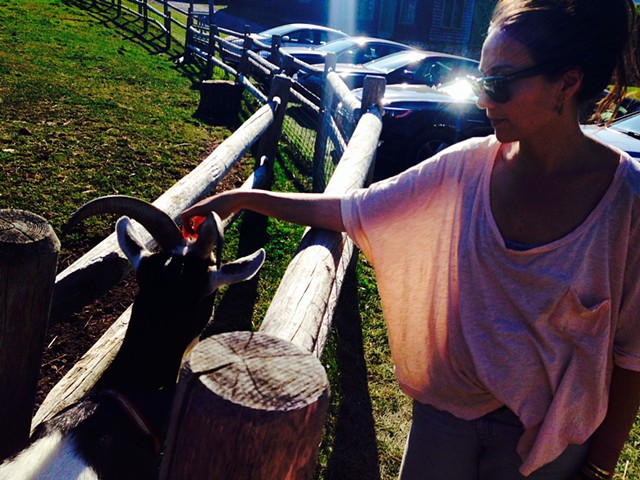About
Leah Rico b. 1975, Buffalo, NY. Leah Rico is an interdisciplinary artist whose practice explores language as its subject matter. Leah uses sound installation, experimental audio, drawing, print and design work to examine the embodiment of voices as words and gestures, and language as a metaphor for worldly experience. Most recently, she has used the experiential nature of sound in her audio installations to investigate the experience of spoken language. Leah is currently working on a series of prints and drawings that examine the coded meanings inherent in typography and architectural space.Leah received an MFA in Visual Studies and BFA in Painting and Printmaking from SUNY Buffalo. She has exhibited sound work in traditional gallery spaces and at non-traditional sites on the east and west coasts, including Princeton University, the Kingston Museum of Contemporary Art in New York, The Gwen Frostic School of Art in Michigan, the Karpeles Manuscript Library in Buffalo, and the Soundwalk Festival in Long Beach, CA. She recently co-curated Dwell, an exhibition investigating built space and the 2011 inaugural exhibition for the Contemporary Artist Center at Woodside.
Information regarding teaching can be found here.
Leah Rico's art practice explores the function of language as it relates to the individual understanding of location, time and the body. Most recently, she uses the phenomenological characteristics of audio to take the work into the lived space of the audience, allowing language to find form through acoustic subtlety. Casting language as quintessence, Rico breaks down the sonic structure of speech, revealing its hidden histories and mapping its unspoken politics.
Artist's statement
The series recurring ciphers composes a listening space for the audience, where issues of communication can be explored. Rico's sound installations examine the relationship between site and sound, to explore how the experience of listening helps us to understand our location. These works operate within the full realm of sensory perception, making an artificial space that appeals to the listener’s subjective perception of it. Digital recording technology, the acoustics of built space and the structures of language itself are the raw materials for installations and audio works for specific sites. Recurring ciphers references stories, myths and other written histories related to these sites in order to examine how language can be used to very disparate ends. In speech, language becomes a physical manifestation of thought. Place, politics, history and listener engagement all contribute to meaning beyond the words spoken.
